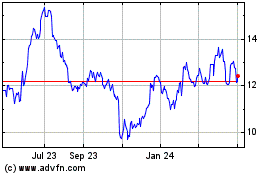Shares of electric vehicle
manufacturer Tesla (NASDAQ: TSLA)
are down almost 50% from all-time highs, valuing the company at
$660 billion by market cap. The EV giant has trailed the broader
markets by a wide margin in the last two years after creating
massive wealth over the past decade. For instance, Tesla stock rose
by 32,000% between its IPO in July 2010 and November
2021.
Similar to other companies, Tesla
has been wrestling with a range of issues in recent quarters,
including rising interest rates, inflation, supply chain
disruptions, a sluggish macro environment, and lower consumer
spending.
These factors have negatively
impacted Tesla’s revenue growth rates and profit margins. Let’s
dive deeper.
How did Tesla perform in Q3 of 2023
In the September quarter, Tesla
reported revenue of $23.35 billion and adjusted earnings of $0.66
per share. Analysts forecast the EV disruptor to report revenue of
$24.1 billion and earnings of $0.73 per share in Q3. While sales
grew 9% year over year, its gross profits fell 22%, and operating
profit narrowed by 52%.
Tesla’s CEO Elon Musk emphasized
he remains worried about rising interest rates as it has increased
the cost of debt significantly. Musk stated, “If interest rates
remain high or if they go even higher, it’s that much harder for
people to buy the car.”
Tesla continues to expand its
portfolio of battery-powered vehicles, but rising competition from
new-age players and legacy manufacturers is also acting as
headwinds for the company.
Moreover, Tesla confirmed the
production of the Cybertruck remains on track, with first vehicle
deliveries scheduled for November 30th.
Currently, the Texas factory can manufacture 125,000 Cybertrucks
each year, and this segment will remain unprofitable for at least a
year post-production.
Tesla and the Bottom Line
Tesla enjoyed a first-mover
advantage and economies of scale. Due to an expanding economy and
lower competition, Tesla could price its cars at a premium and
benefit from outsized profit margins. For instance, the EV giant
ended 2022 with an operating margin of 17%, much higher than its
peers such as Ford (NYSE:
F), Mercedes-Benz,
Volkswagen, and Toyota. But Tesla’s margin advantage has eroded in
the past year.
While Tesla increased sales by
just 9% in Q3, its:
COGS increased by
18%
Operating income fell 52%
And
GAAP EPS fell 44%
It reported a free cash flow of
$848 million, a decline of 74% compared to the year-ago period.
Tesla has lowered its average selling prices, negatively impacting
its profit margins. Moreover, the launch of the cybertuck and
investments in artificial intelligence and other research and
development projects are weighing on its bottom line.
Legacy auto manufacturers are under
pressure
EVs are costly, and a higher
pricing environment has lowered consumer demand drastically in the
last 18 months. Several legacy auto manufacturers, such as
Mercedes-Benz and Ford, are selling their EVs at a loss to maintain
market share.
Earlier this month, Ford claimed
that customers are no longer willing to pay a premium for EVs, and
itU+02019s now postponing $12 billion in planned spending in the EV
segment. It suggests Ford will decelerate its EV spending and
gradually ramp up its manufacturing capacity instead.
While Ford’s EV business unit
increased revenue by 26% in Q3, its operating losses almost doubled
to $1.3 billion. In the first nine months of 2023, Ford’s EV
segment has reported an operating loss of $3.1 billion.
Mercedes-Benz, too, remained wary
of challenges in the EV market, with the company’s CFO calling it a
“pretty brutal space” during the earnings call in Q3.
Alternatively, Tesla had access
to low-cost debt for most of the 2010s and leveraged lower interest
rates to fuel its expansion plans. However, higher yields and
interest expenses in 2023 make it riskier and more expensive for
auto manufacturers to increase balance sheet debt.
What does this mean for Tesla stock and
investors?
Analysts expect Tesla’s adjusted
earnings to narrow by 26.3% to $3 per share in 2023. It suggests
Tesla stock is priced at 70x forward earnings, which is quite steep
for a company struggling to post consistent profits.
Generally, a company that enjoys
pricing power and expanding earnings is valued at a premium. In the
last few years, the EV space has attracted new players such as NIO
(NYSE:
NIO) and Lucid and established players including
Toyota (NYSE:
TM), Ford, and General
Motors (NYSE:
GM), making it difficult
for Tesla to keep growing the top line rapidly.
As interest rates have gained
pace, Tesla is focused on making its cars more affordable and
maintaining demand. However, this has resulted in narrower cash
flows and profit margins.
Given these factors, Tesla’s
valuation might move significantly lower in the next 12 months. If
Tesla ends 2023 with $3.2 billion in free cash flows and increases
the metric by 30% to $4 billion in 2024, the stock should be valued
at $400 billion, even if we assume it trades at 100x future cash
flow. It suggests a drawdown of over 40% from current
levels.
Ford Motor (NYSE:F)
Historical Stock Chart
From Oct 2024 to Nov 2024

Ford Motor (NYSE:F)
Historical Stock Chart
From Nov 2023 to Nov 2024
